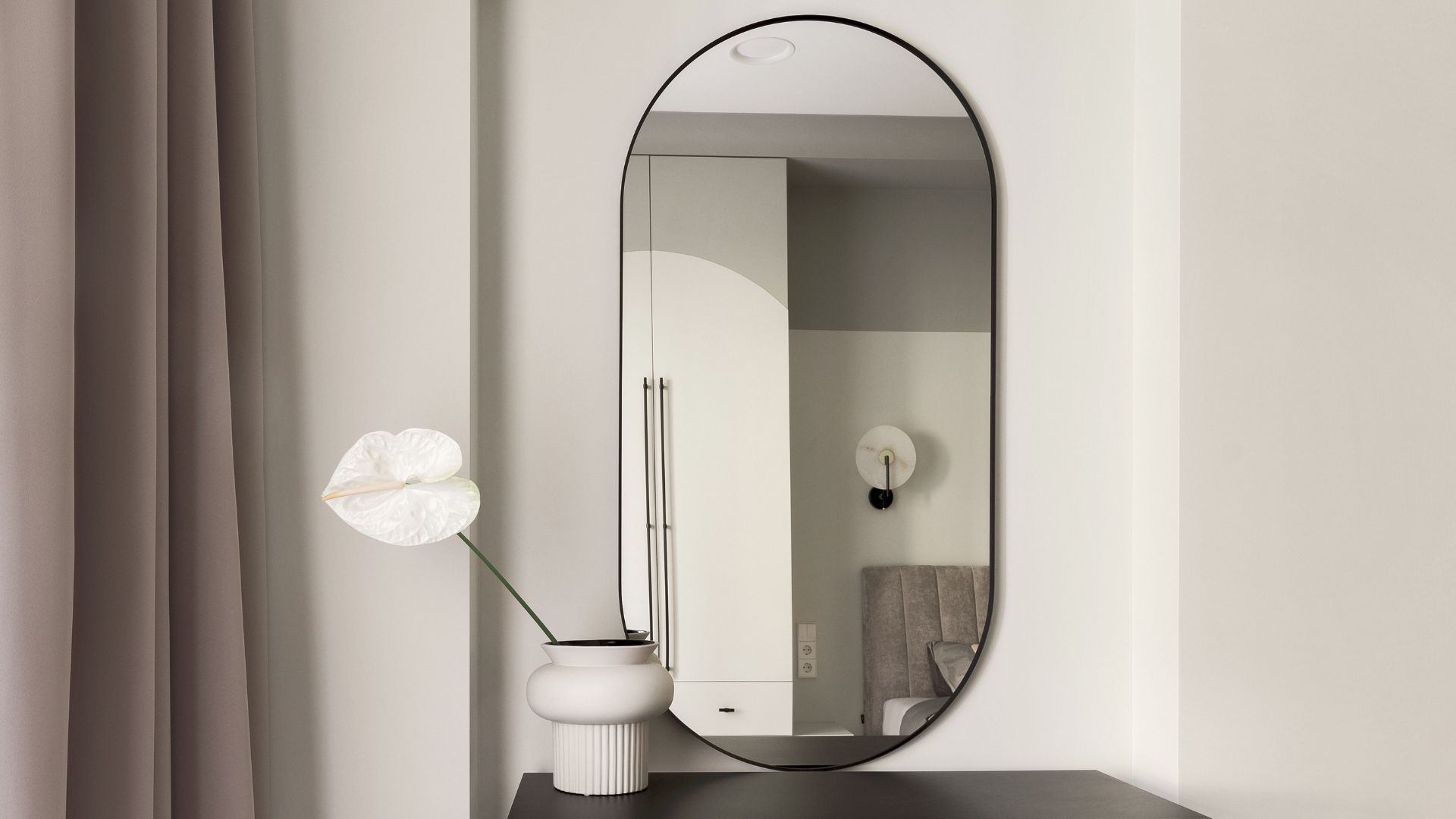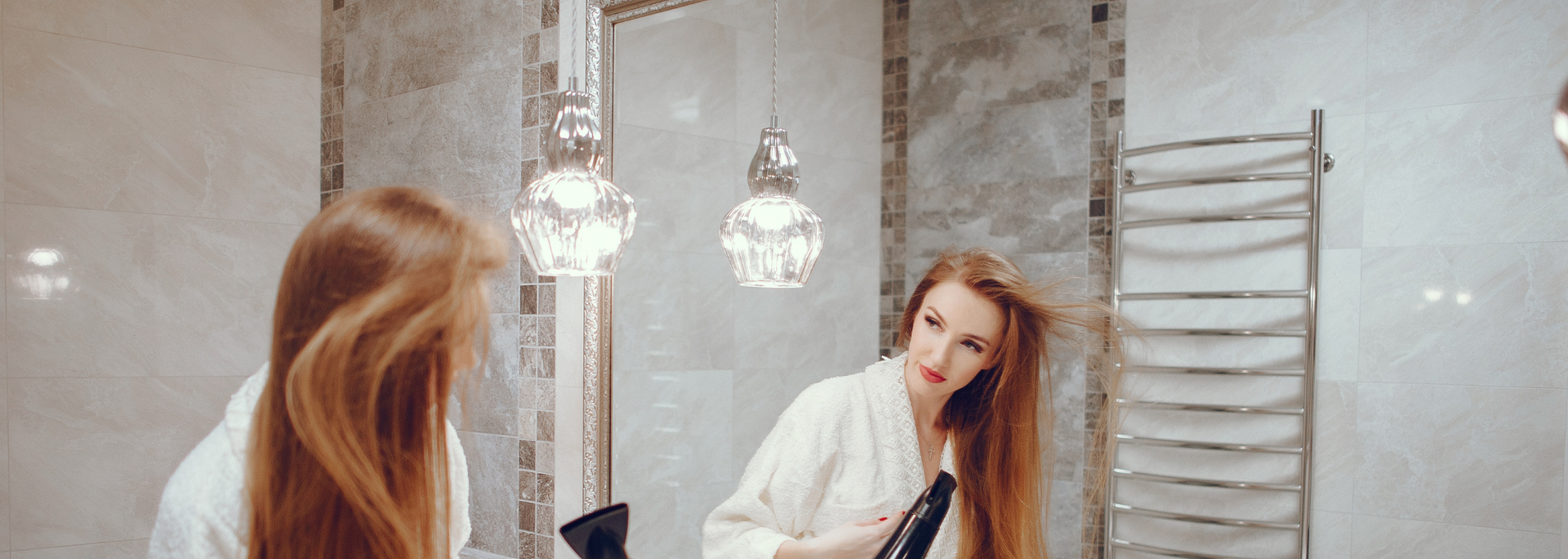Acrylic mirrors vs glass mirrors in interior design
Share this blog:
Mirrors are a staple of interior design for a reason. But which is better, acrylic or glass? Explore your options in our glass guide.

We live in the Age of Choice. Whether you're buying a pair of trainers or designing an office space, you're likely to be met with an exciting and bewildering array of possibilities.
We say "exciting and bewildering" because the Age of Choice has its pros and its cons. On the one hand, you can get closer than ever before to realising your individual vision in all its granular detail. On the other hand, it's all too easy to be struck down with a bad case of analysis paralysis.
In the world of interior design, mirrors are a strong example of this. A quick Google search will reveal that some people are passionately Team Acrylic and others fanatically Team Glass. Who's right – and more importantly, which material is right for your project?
Acrylic is popular for a reason. It's lightweight, durable, easy to shape and easy to manufacture. However, it lacks the pure reflectiveness of glass and it can't be installed outdoors.
Here at ToughGlaze, we stock high-quality mirror glass that we call TG REFLECT. In our admittedly biased opinion, it offers most of the advantages of acrylic glass with a higher level of reflectiveness. And if you get the glass toughened, it's ideal for installations where safety is a must.
So, without further ado, what are the factors you should keep in mind when choosing a material for your mirror? Let's find out.
The benefits of acrylic mirrors
Acrylic mirrors have two main benefits: they're lightweight and they're sturdy.
The lightness of acrylic makes handling and installation a breeze. Its sturdiness, meanwhile, makes it highly resistant to impact and virtually shatterproof. This makes it ideal for installations where safety is a priority.
On top of this, acrylic doesn't stain, discolour or smear easily – and if it does, it can be quickly and easily cleaned with detergent and water.

In the negative column, acrylic can only be used indoors. It also falls short in a couple of respects when compared with toughened mirror glass. It has a less pure reflectiveness and isn't as strong in terms of impact resistance. These are two key reasons why many interior designers opt for toughened glass.
The benefits of glass mirrors
Glass doesn't warp or distort. And while standard annealed glass breaks more easily than acrylic, toughened glass is extremely durable and resistant to impact.
This is because toughened glass (also known as "tempered glass") is manufactured to withstand impact and break more safely than standard glass. Whereas annealed glass breaks into dangerous shards, toughened glass shatters into relatively harmless smithereens.
Combined with its perfect reflection – one that acrylic can't match – this level of safety makes it an ideal choice of material for mirrors in interior design.
It can be made to measure and cut to size. It can also be curved, bent and drilled. The only caveat here is that these modifications must be made before the toughened glass is fired. If you try to drill a hole in a toughened glass mirror, you're going to be cleaning up a lot of tiny pieces.
Unlike acrylic, mirror glass can be used both indoors and outdoors. In both cases, it's easy to clean. The only thing to keep in mind is that you'll need a specialist glass cleaner rather than an all-purpose detergent.
Perhaps the only factor in the minus column for mirror glass is its weight. Acrylic is undeniably lighter and easier to handle. This can make it preferable for DIY projects. But if you work with professionals, this needn't be a problem.
Acrylic or glass: which should you choose?
If you're installing your mirror outdoors, you should use mirror glass rather than acrylic. This is because acrylic can react badly to moisture and start to lose its sheen.
If you're installing your mirror indoors, your decision will be affected by a few things. The first is cost. The second is the importance of reflectiveness to you.

Acrylic provides an adequate level of reflectiveness. But if you want a pure reflection, glass is the way to go.
As well as providing a pure reflective surface, mirror glass can also be toughened for extra safety. This keeps the occupants and users of the building safe, and its durability means you're unlikely to be replacing it any time soon.
As so often in interior design, there's no one answer to the question. But for our money, toughened mirror glass does the job well – and it's cost-effective, too.
At the end of the day,
TG REFLECT is a high-quality and versatile material that can help transform an indoor space. It can make a room feel bigger and brighter with no compromise on safety. What's not to like?
How we can help
Here at ToughGlaze, we stock TG REFLECT mirror glass. This combines high levels of functional performance with high levels of aesthetic appeal. And, like all our glass products, it can be customised to meet your project's specific requirements.
It can be drilled, notched and cut to size. Its edges can be polished or bevelled, and it comes in a variety of reflective finishes. It can even be
sandblasted or
digitally printed with a border, logo or other design of your choosing.
TG REFLECT comes in a thickness range of four to six millimetres. It has a stock size of 6000 mm by 3000 mm – but if you need a bigger size, get in touch and we'll see what we can do.
And for your peace of mind, it's manufactured in line with the relevant industry standards. This means it complies with BS EN 12150 and bears the Kitemark seal of approval.
Looking for high-quality mirror glass, cut to size? Don't hesitate to contact ToughGlaze for a quick, competitive quote or explore our product range online.









